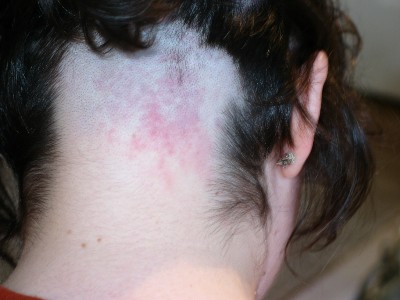
The first hearing by Gov. Bob McDonnell’s Lyme Disease Task Force to receive public testimony will be Tuesday, March 1, from 1 to 4 p.m. in Virginia Beach.
Input from the public hearings will be combined with information from four expert witness hearings to develop recommendations to the governor to assist victims of Lyme disease, enable better diagnosis and treatment and help lower the incidence of tick-borne disease.
Tuesday’s hearing will be in the Moot Court Room (in Robertson Hall, first floor) of Regent University, 1000 Regent University Drive, Virginia Beach. regent.edu/about_us/campuses/campusmapflyer.pdf
Virginia saw cases of Lyme disease jump from 357 in 2006 to 959 in 2007. it was 886 in 2008 and an estimated 908 in 2009. That’s a rate of 8.9 cases for every 100,000 people, according to the Centers for Disease Control and Prevention.
Lyme disease is caused by a bacteria carried by certain types of ticks. the ticks pick up the bacteria when they bite mice or deer that are infected with Lyme disease. People can become infected when they’re bitten by an infected tick, according to the National Institutes of Health.
Risk factors for Lyme disease include:•Doing activities that increase tick exposure (for example, gardening, hunting, or hiking)•Having a pet that may carry ticks home•Walking in high grasses
To prevent catching Lyme disease, when walking or hiking in wooded or grassy areas:•Spray all exposed skin and your clothing with insect repellant (spray outdoors only, do not use on face, use just enough to cover all other exposed skin, don’t spray under clothing, don’t apply over wounds or irritated skin, wash skin after going inside)•Wear light-colored clothing to make it easier to spot ticks•Wear long-sleeved shirts and long pants with the cuffs tucked into shoes or socks•Wear high boots, preferably rubber•Check yourself and your pets frequently during and after your walk or hike.
Ticks that carry Lyme disease are so small that they are very hard to see. After returning home, remove your clothes and thoroughly inspect all skin surface areas, including your scalp.
Not everyone infected with these bacteria gets ill. if a person does become ill, the first symptoms resemble the flu and include chills, fever, headache, lethargy and muscle pain.
There may be a flat or slightly raised red spot at the site of the tick bite. often there is a clear area in the center.
Symptoms of later stages of the disease include body-wide itching, joint inflammation, stiff neck and unusual behavior.
A full course of antibiotics is used to treat people with Lyme disease. if diagnosed early, it can be cured. Without treatment, complications involving the joints, heart, and nervous system can occur. that includes decreased concentration, memory disorders, nerve damage, numbness, pain, face muscle paralysis, sleep disorders and vision problems
Click here for more on tick removal.
Find more health news and information at dailypress.com/health.